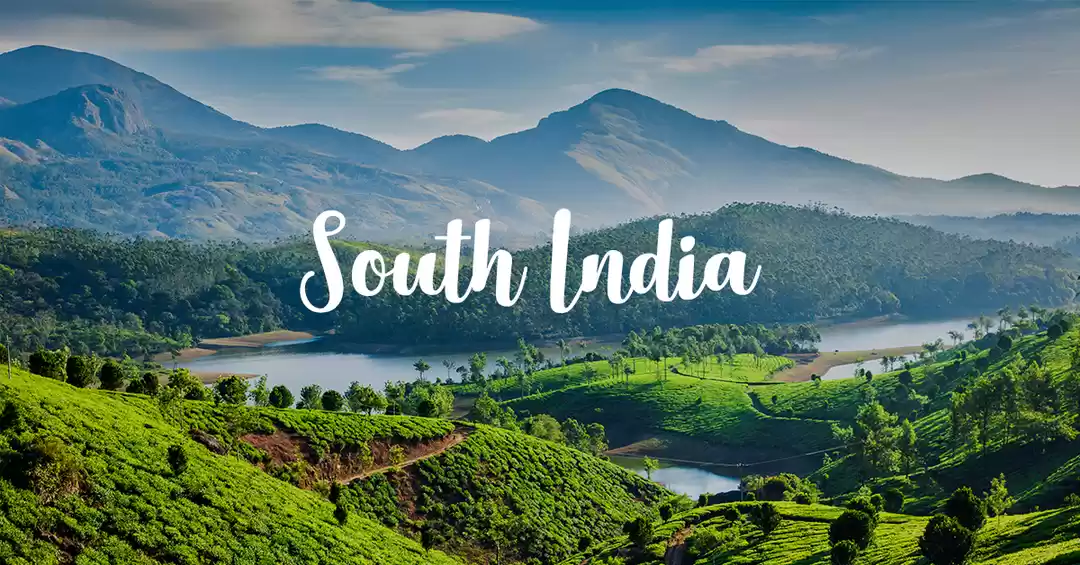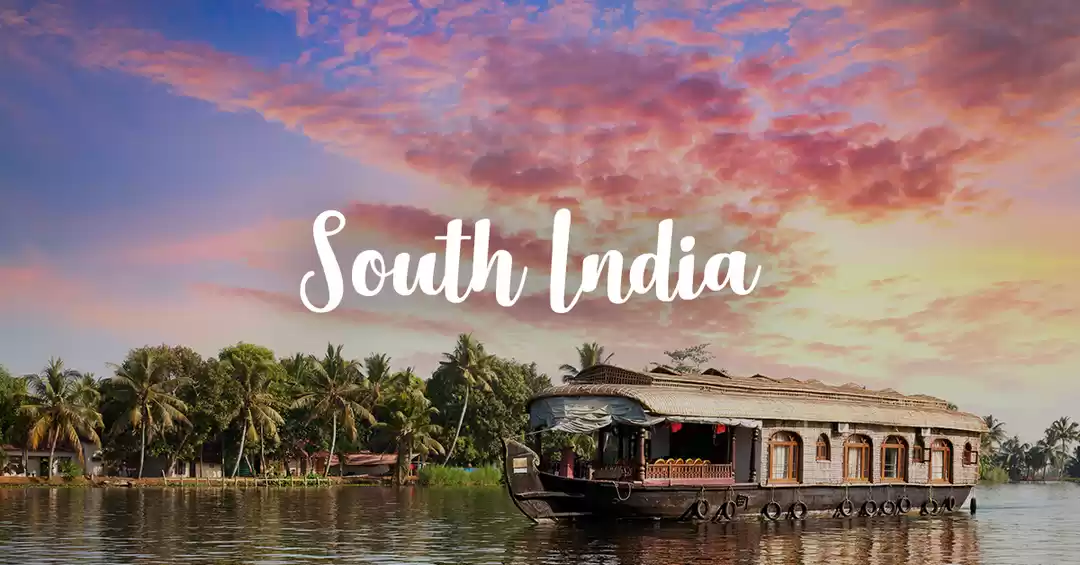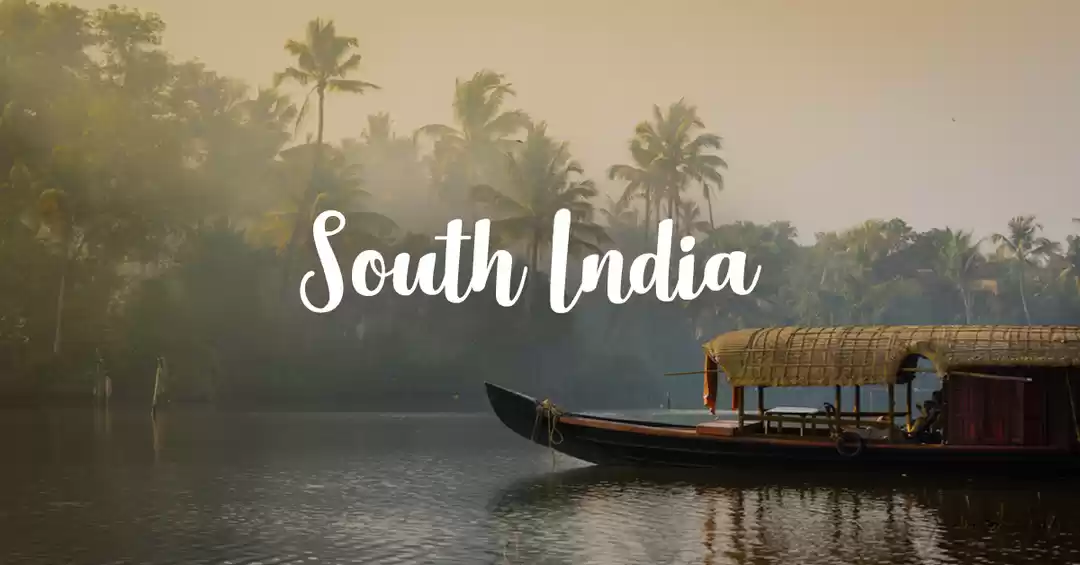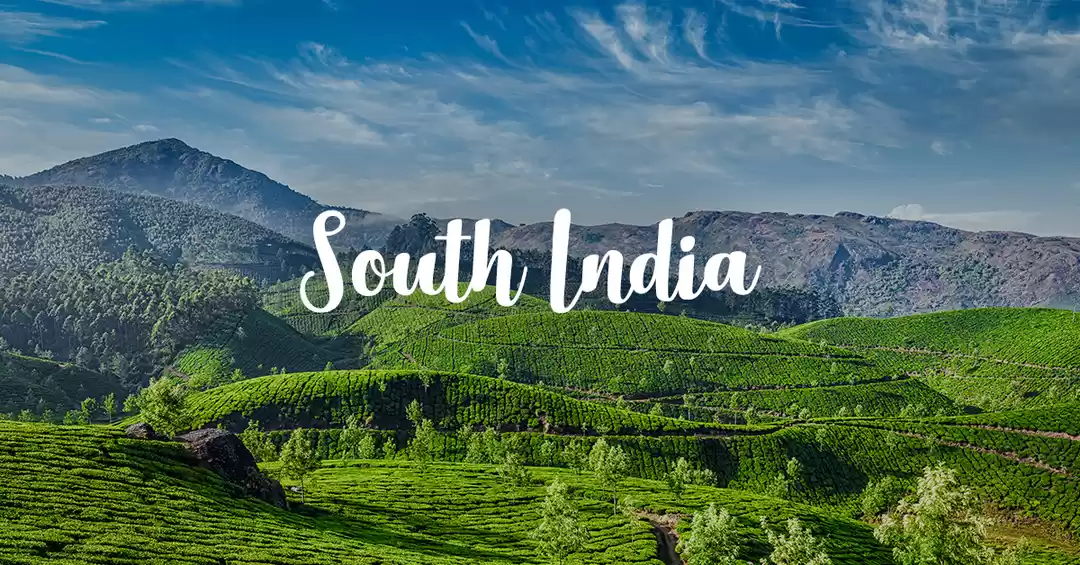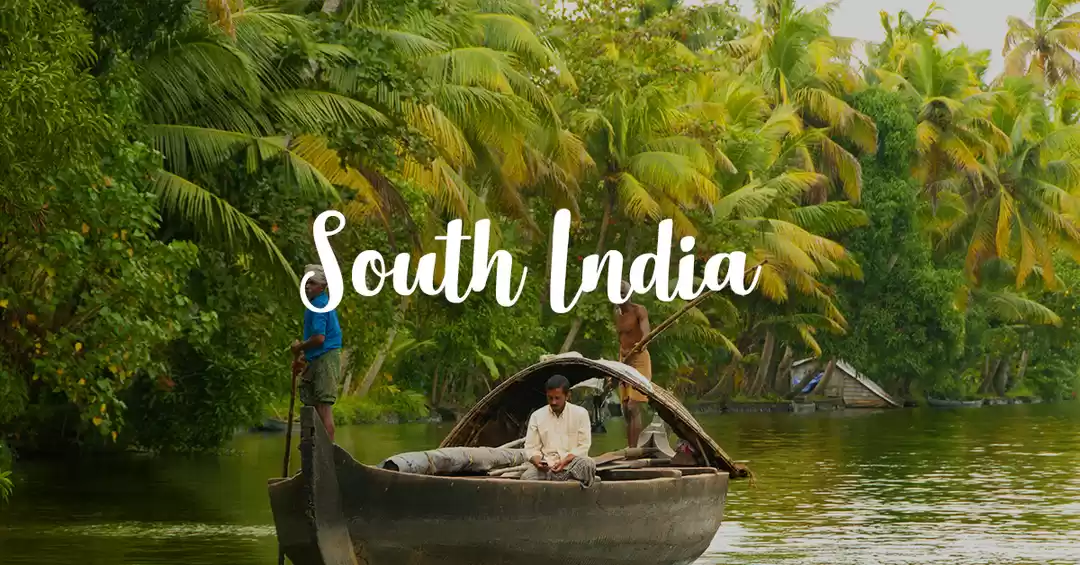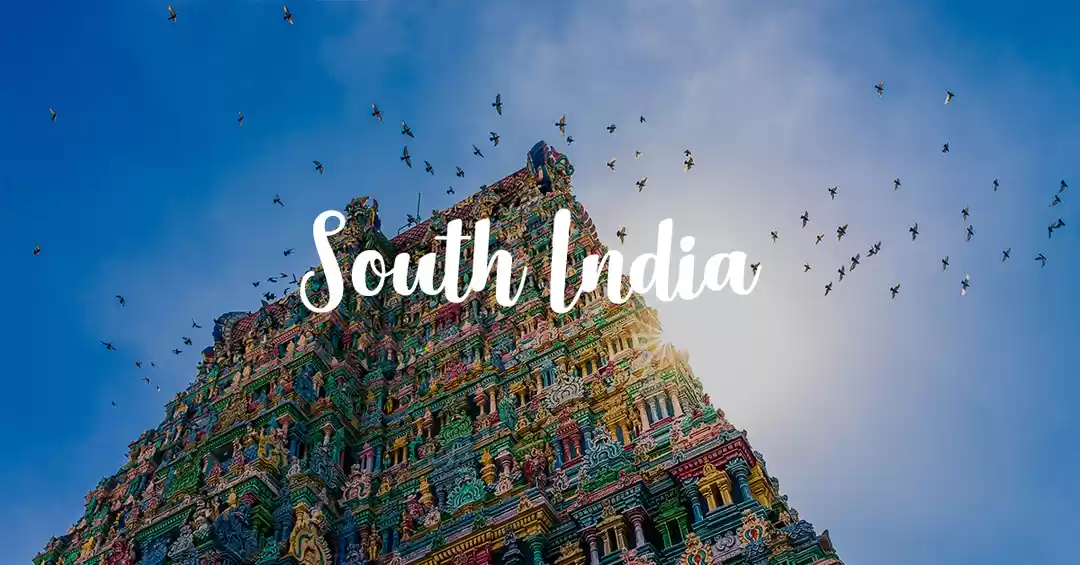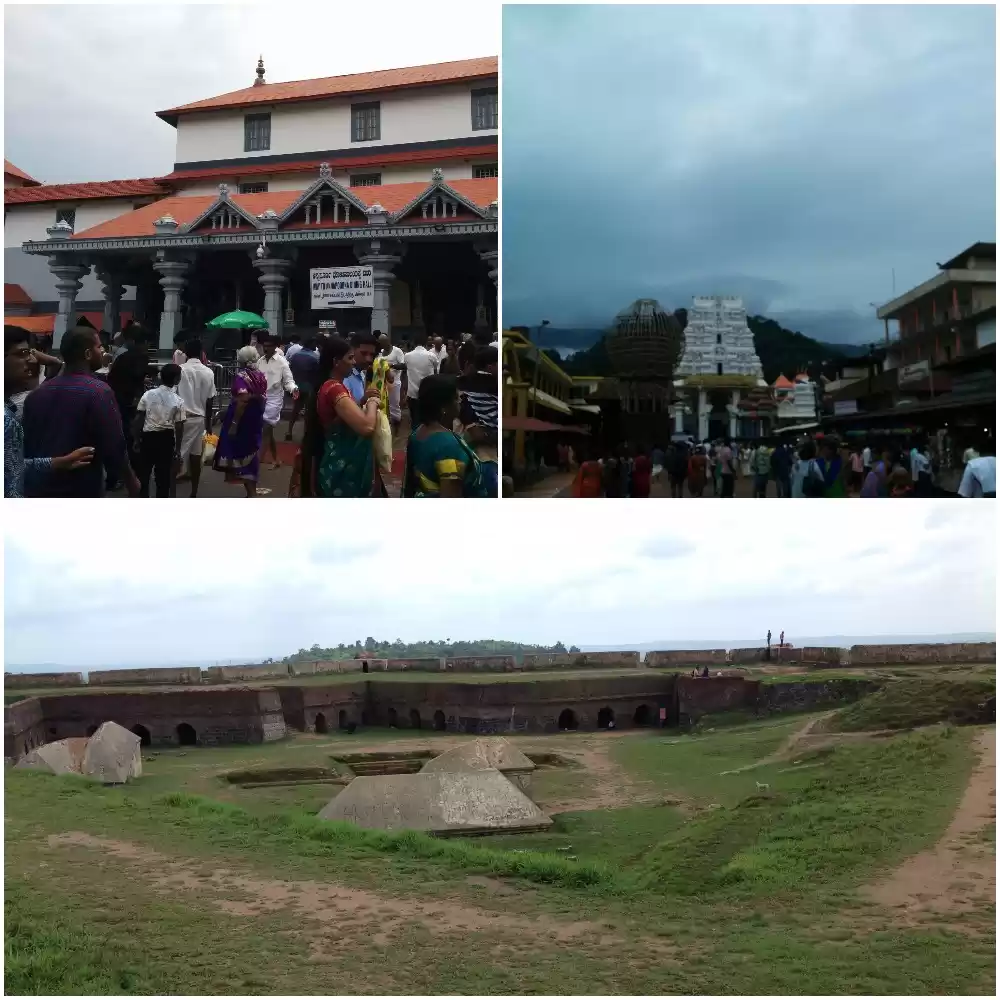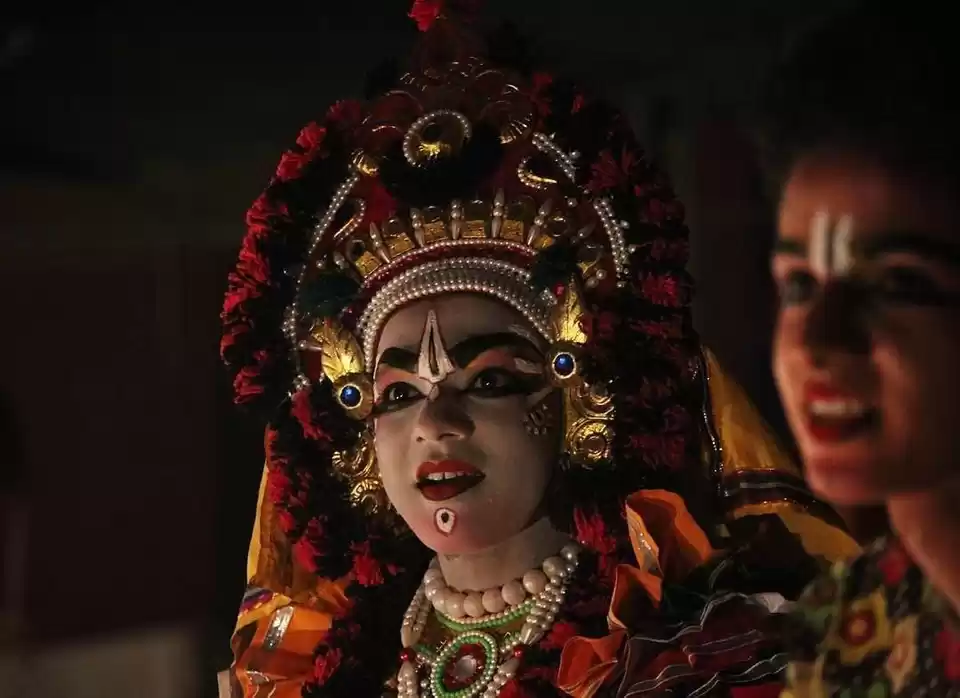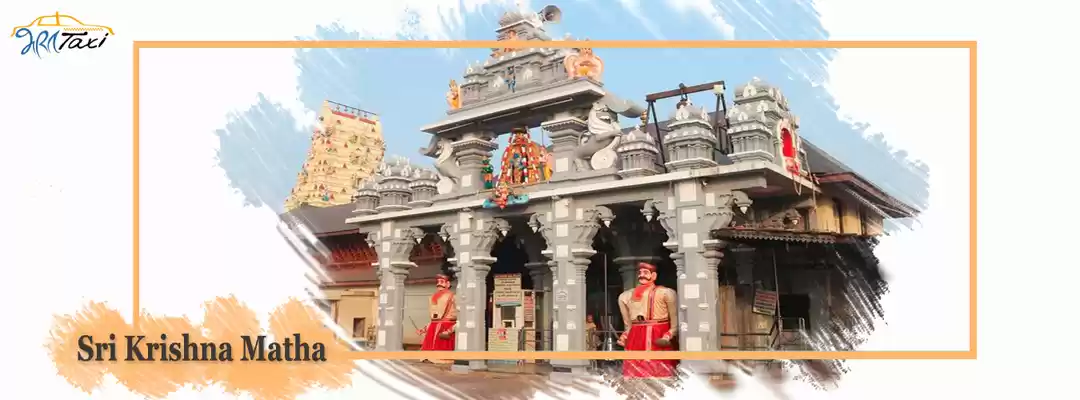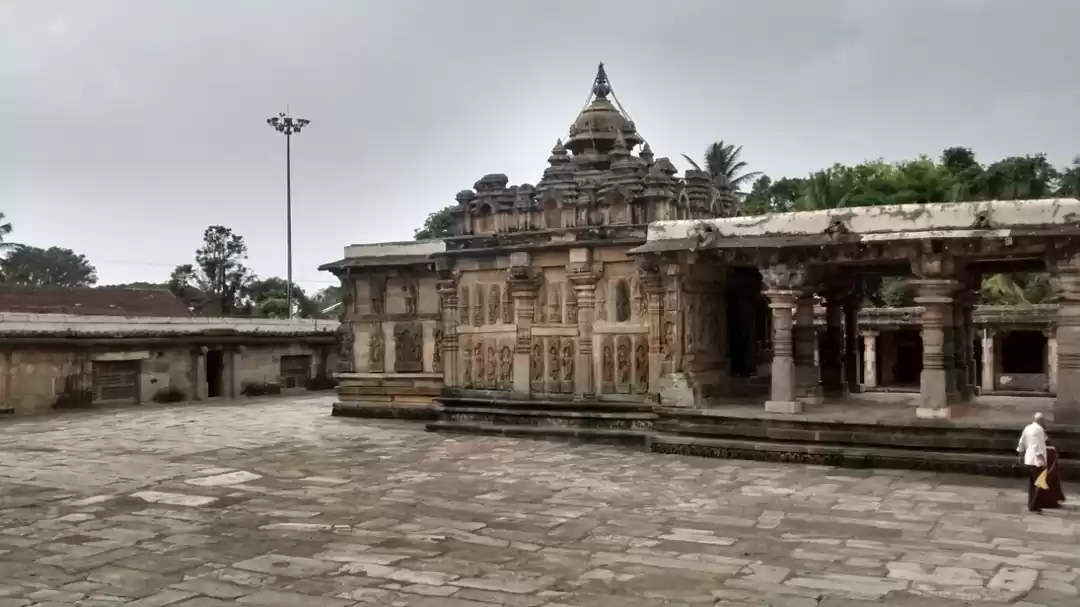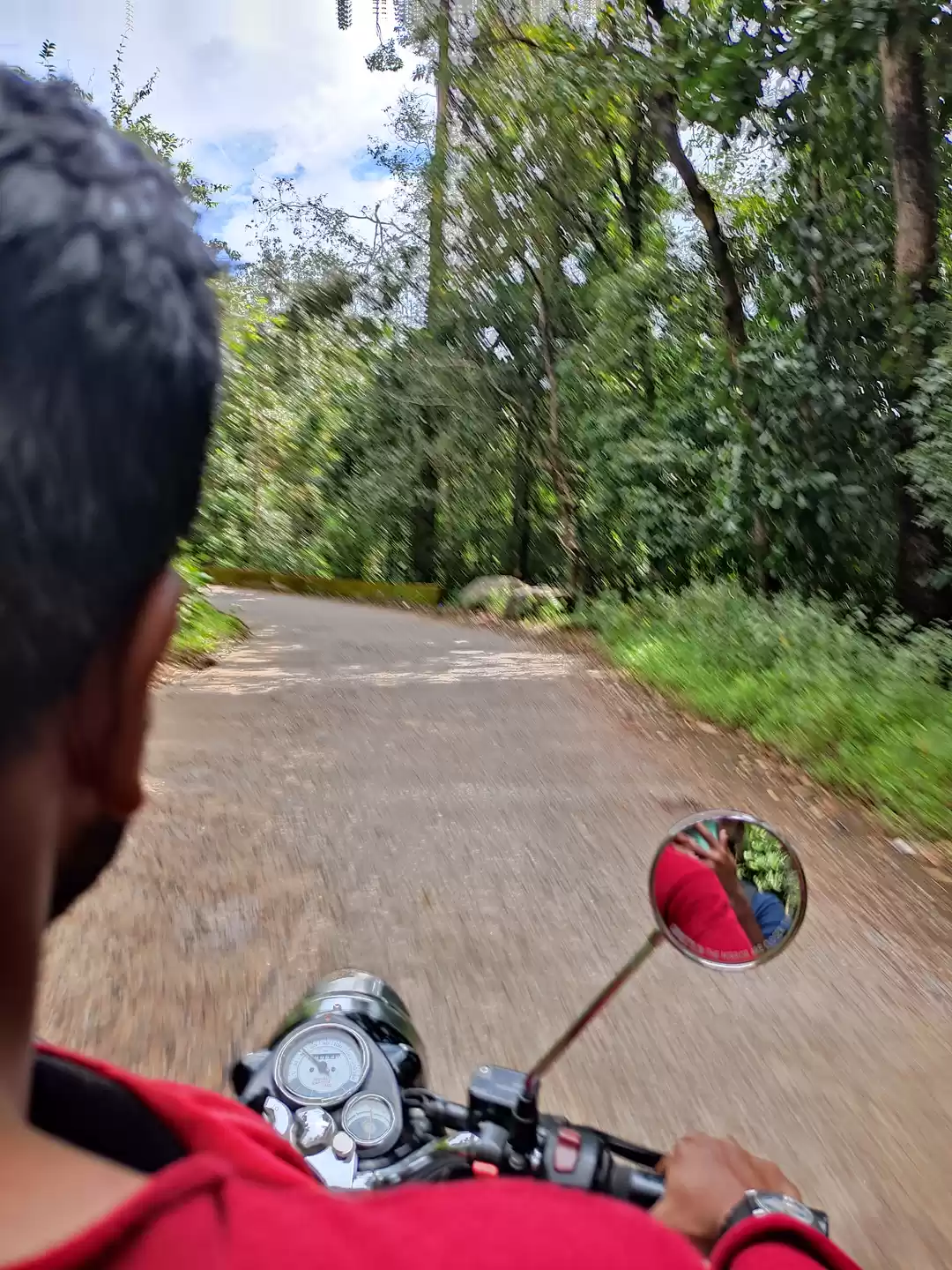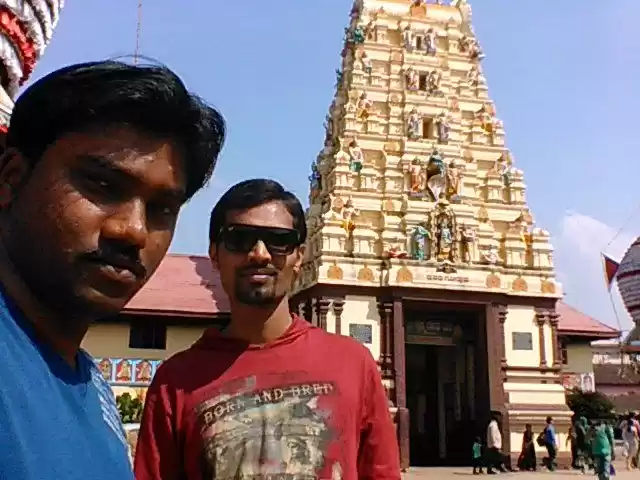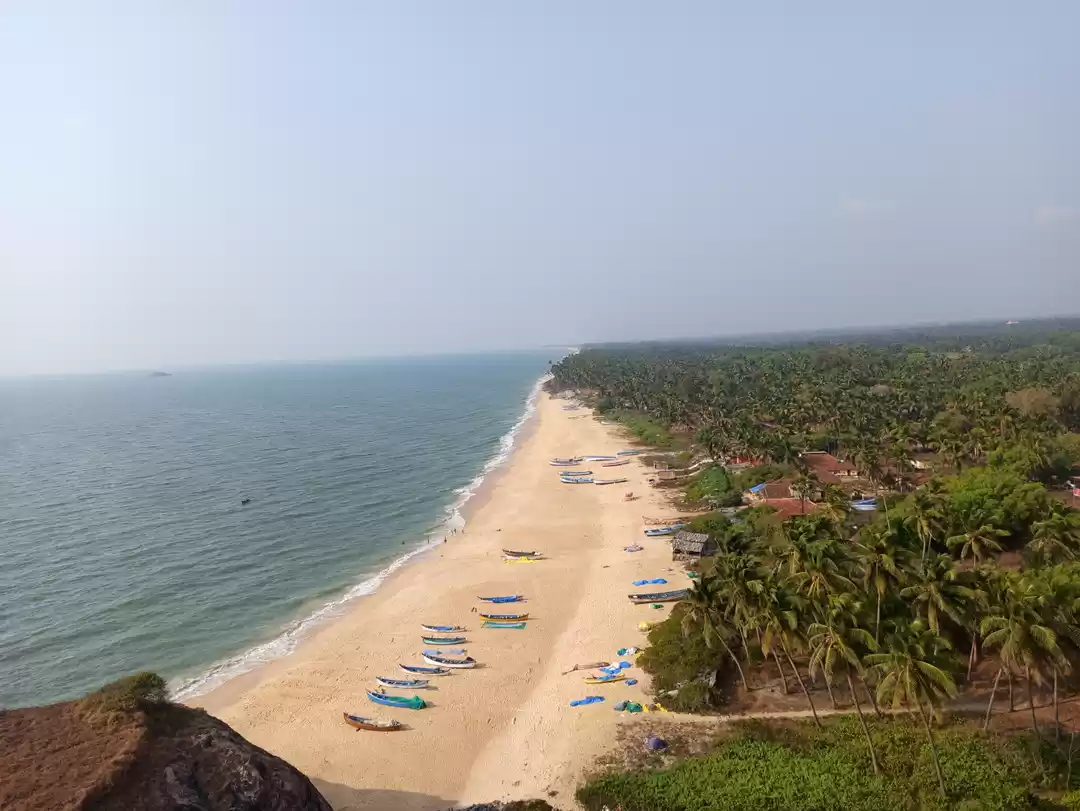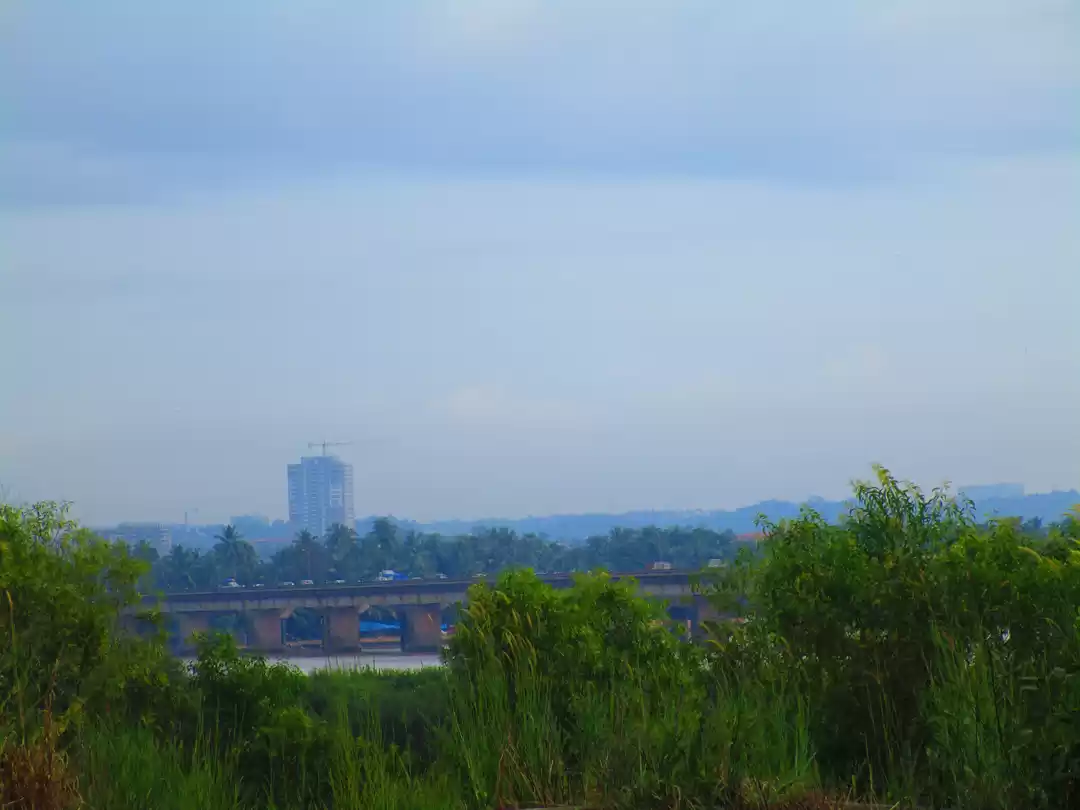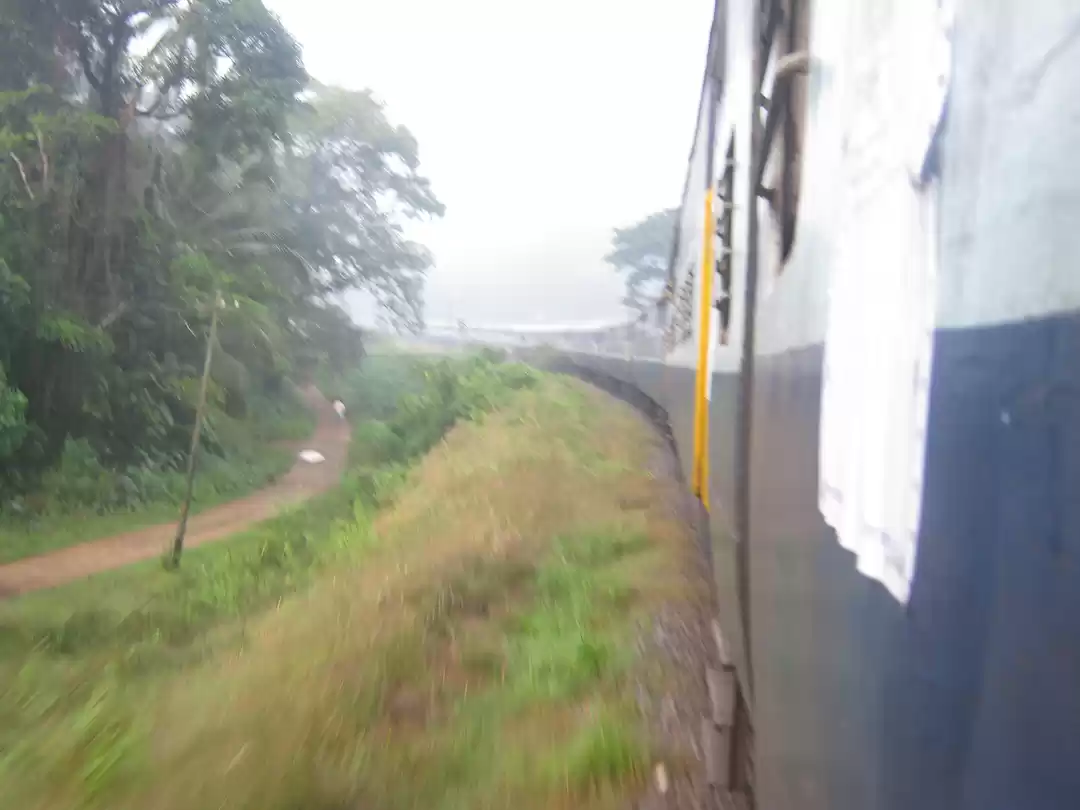

One of the regions in India that is blessed with rich culture and architecture, enormous natural beauty, abundant greenery, historic monuments and buildings is the South Indian state of Karnataka, thus leading to the tagline of the State Government's Tourism Department, " One State, Many Worlds" which is spot on. The state has many ancient religious places in the districts of Dakshina Kannada (formerly known as South Canara), Udupi and Uttara Kannada (formerly North Canara) districts. These districts are about a distance of 290 to 550kms from the state's capital Bengaluru. Some of the regions of these districts are also part of the Western Ghats of India while the other significant part forms Canara (or Coastal Karnataka or Karavali) which is a long stretch of land alongside the coast of Arabian Sea.
From Bengaluru, these places are best reached by road via Hassan and Sakleshpur or by daily train. While on a journey to these places, one can witness the amazingly beautiful nature with the lush greenery of the Shiradi Ghats near Sakleshpur and the coastline of Arabian Sea starting from Mangaluru [Mangaluru is the administrative headquarters of Dakshina Kannada] . The regions have numerous temples (with many different deities to take blessings from) and each temple's visit here is so divine. Few of the popular ones include Kukke Subramanya Temple, Dharmasthala Temple, MangalaDevi, Kadri Manjunatha (in Dakshina Kannada), Kollur, Udupi Krishna Mutt, Anegudde Temple or also called as Kumbashi Ganesha (in Udupi district), Murdeshwar, Gokarna, Idagunji (in Uttara Kannada).
The coastline has many beautiful beaches like Tannirbhavi and Panambur beach in Mangaluru, Suratkal beach, Padubidri (a blue flag certified beach near Mangaluru), Kapu, Malpe and Maravanthe beach in Udupi, Murudeshwar beach, Gokarna Om beach, Kasarkod beach (another blue flag certified beach) in Uttrara Kannada district, to name a few. The coastline then meets the Konkan region at Karwar (a town in Uttara Kannada) that is about 20kms from Goa. With many religious places and so much natural beauty and greenery, this region of Karnataka is a perfect place to get closer to god as well as to nature.
Of the many temples here, on a short 3 day trip from Bengaluru in November 2019, we covered some of the temples and a few beaches too. Below is the route and the itinerary in brief
Itinerary in brief
The route we covered is as below
Bengaluru - Subrahmanya Road - Kukke Subramanya - Dharmasthala - Udupi - Kapu - Malpe - Idagunji - Murdeshwar - Bengaluru
Trip Highlights
Scenic train journey from Sakleshpur to Subrahmanya Road.
Darshan and blessings at temples of Kukke Subramanya, Dharmasthala, Udupi, Idagunji and Murdeshwar .
Witness the second tallest Shiva Statue in the temple town of Murdeshwar. Quality time spent at beaches near Udupi [Kapu and Malpe]
Gadbad ice-cream treat at Udupi
A trip done completely using Public transport which involved travel by bus, rail and auto-rickshaw.
Day 1: Day train journey from Yesvantpur (YPR, Bengaluru) to Subrahmanya Road (SBHR) via Hassan and Sakleshpur and visit Sri Kukke Subramanya Temple and then proceed to Dharmasthala. Darshan of Shri Dharmasthala Manjunatha. Stay at Dharmasthala
Train journey is about 7-8 hrs starting at 7:10AM reaching around 2:30PM. Distance to Temple from Subrahmanya Road Station is about 13kms taking 20minutes by bus.
Subramanya to Dharmasthala is about 54kms taking 1.5hrs by bus.
Day 2: Bus journey from Dharmasthala to Udupi. Visit Shri Krishna Mutt and take the lord's blessings. Visit Kapu and Malpe beach. Stay at Udupi
Dharmasthala to Udupi is about 110kms taking about 2.5hrs by bus
Day 3: Train journey from Udupi to Murdeshwar. Visit Idagunji Ganesha Temple, Murdeshwar Temple and beach. Night bus journey from Murdeshwar to Bengaluru.
Train journey is about 1.5hrs to Murdeshwar. Railway station to Idagunji temple is about 25kms taking 30minutes. Murdeshwar Railway station to Murdeshwar Temple is about 3kms
Day 4: Reach Bengaluru by around 7AM
Murudeshwar to Bengaluru about 500kms taking about 11 hrs

Kukke Subramanya and Dharmasthala
Our journey began at Yesvantpur Junction, an important Railway station serving the city of Bengaluru. We traveled by the Yesvantpur - Karwar Express day train departing Yesvantpur Junction at 7:10AM traveling a distance of 271kms reaching Subrahmanya Road Railway station (also called Nettana Railway station) at around 2:30PM.
The journey from Sakleshpur to Subrahmanya Road is one of the scenic train journeys in India. With a distance of 55kms, the railway line passes through more than 50 tunnels and more than 100 bridges and the entire journey is filled with thick green blanket. The train takes about 2.5hrs to complete this stretch leaving Sakleshpur at around 12PM. This stretch is a descend from about 910m height in Sakleshpur to 120m at Subrahmanya Road. To work smoothly in this region which has massive gradients, an additional diesel loco is attached to the train at Sakleshpur and detached at Subrahmanya Road. Because of this, the train stops for 10 mins in both stations and this gave us ample time to collect packed lunch available at the Railway platform for about INR 50. We traveled in the AC Chair car (fare INR 460) which had wide windows that provided good views of the outside. We had our lunch in the train and then even stood at the coach's door for some time to get best views of the passing tunnels, bridges, hills and greenery.

After reaching Subrahmanya Road station, one can find 2 or 3 KSRTC buses [Karnataka Government run bus services] waiting for departure to Kukke Subramanya and Dharmasthala. We got into one of the buses headed to Subramanya and reached the bus station at around 3PM. The main temple is about a 5 minutes walk from the bus stand and the temple is open for darshan from 5 AM to 2.00 PM and 3.30PM to 9.30 PM.
The temple (located in the Western Ghats in the Dakshina Kannada district) is surrounded by dense forests with a picture-perfect backdrop of the famous Kumara Paravata, a mountain that is a popular hiking/trekking destination for trekkers. The main deity of this temple is Lord Kartikeya worshiped as Subramanya, the lord of all serpents. The temple is so old that it is believed that Jagadguru Sri Adi Shankaracharya had visited and stayed here for a few days during his expedition. There is another temple called Adi Subramanya Temple, a 5-10min walk from the back gate of the main temple. This temple premises has a stream of Kumaradhara river flowing and devotees can take a holy dip here before having darshan. The Adi Subramanya Temple was very less crowded while darshan at the main temple took roughly an hour. Next to the temple entrance is the Prasada counter where we collected the Prasada and were ready for our next destination.
After having evening snacks and coffee at a darshini in the temple road, around 5PM, we headed back to the bus stand where we got a KSRTC bus to Dharmasthala, our next temple stop. Shri Kshetra, Dharmasthala is an ancient Hindu temple at Dharmasthala, in the Uttara Kannada district about 54kms from Kukke Subramanya. There are many regular buses to Dharmasthala with a frequency of about 30 minutes and travel in ordinary bus costs about INR 75. The journey to Dharmasthala is quite good with lots of greenery and decent roads.
We reached Dharmasthala around 6:30PM. We had booked our stay at Sahyadri Guest House [Opposite to the new KSRTC bus stand and about 10-15 mins walk from the Sri Kshetra]. The Guest house is run and maintained by the temple administration and there are many other lodges run by them in the vicinity that offers stay at a minimum cost. The Non AC room costed us INR 500 per day and can be booked online from their website [ Click here for Room booking]. The room was quite good and very much sufficient for a one night stay.
After checking in and refresh, we headed to the darshan of Sri Manjunatha. The main diety is Lord Shiva and is worshiped as Manjunatha in this 800 year old Shaiva temple with Vaishnava priests and administration run by Jain Bunt family of Pergade and the chief administrator [Dharma Adhikari] is titled as 'Heggade' . The current Dharma Adhikari is Veerendra Heggade and has been since 1968.
The temple was a bit crowded filled with lots of devotees. We completed the darshan of Manjunatha and Ammanavaru (Goddess Parvati) around 8:15PM and then headed for dinner. The temple provides free food for all pilgrims irrespective of the caste/creed. Food is served for both lunch and dinner and this Anna Daana [Food donation or serving food] is the best aspect of the temple. After having a very good dinner at the temple's dinner hall [called Annapurna, which refers to the Hindu goddess of food], we headed back to our lodge for a comfortable sleep.

Udupi, Kapu and Malpe
On the next day, we had breakfast around 7AM at the Annapurneshwari Veg Restaurant opposite to our lodge and then boarded a KSRTC bus to Udupi, the travel of a distance of about 110kms took nearly 3 hrs and we reached Udupi at around 10AM. The bus fare is about INR 135 in an ordinary bus. The roads at some places were not in a good condition. We reached our hotel Vyavahar Lodge, a small hotel close to the 'Ratha beedi'. The hotel costed us about INR 650 for one day and the room was decent. After a quick refresh, we headed to visit the Lord.
Udupi's Sri Krishna Mutt was established in the 13th century by Jagadguru Sri Madhvacharya who was born in the Udupi region and it is believed that he found an idol of Sri Krishna in a large lump of Gopichandana [yellowish clay like material used by the Vaishna Brahmins to apply the sacred religious mudras] given to him by a sailor. It was Sri Madhvacharya who also established the Ashta Mutt/Matha [8 Mutt or Temples] around the Krishna Mutt and these eight Mutts are assigned the administration of the Krishna Temple in rotation of two years each and the process is called Paryaya.
An important landmark near the Krishna Temple is the Ratha Beedi or also called Car street that has lots of old shops that sell religious and traditional items. The road is closed for vehicles and it is here on this street that the chariot (or Ratha) of the Temple is taken around. The road also provides access to the famous ' Kanakana Kindi' [Or Kanaka's window], a peephole through which Lord Krishna gave darshan to the famous saint poet Kanakadasa. It is believed that Kanakadasa, being of a lower caste, was not allowed inside the temple and was a pious devotee (or paramabhakta) of Lord Sri Krishna. Kanakadasa used to sit outside the temple wall and sing bhajans in praise of the lord. To appease his paramabhakta, the Lord made a crack in the wall and turned from East to West. This crack was later enlarged to a window and is now considered as the first point of darshan. It is believed that all devotees should first get the glimpse of the Lord through this window named after the saint and then proceed to the inner sanctum.
After our darshan at Kanakana Kindi, we proceeded for the main darshan and the temple was very much crowded with the darshan queue moving very slowly. Around 12PM, we finished our darshan of Lord Sri Krishna and also Subramanya swamy (at a temple inside the Mutt) and headed for free lunch provided at the Mutt. Post lunch, we did relax for a bit at our lodge.

Our next plan was to hit the beaches. Kapu beach is in a small village of Udupi [called Kaup or Kapu]. The beach is usually very less crowded and we took a bus from Udupi to Kapu that drops at the Kapu beach bus stop on the Mangaluru-Udupi Highway and is about 15kms from Udupi bus stand. From here, there are auto-rickshaws available to reach the beach and they usually charge around INR 50 for a distance of about 4kms.
The main attraction here is the century old Lighthouse which was built in 1901 on a rock and is about 27m height. The lighthouse is open for visitors from 4:30PM and the stairs get steeper as we ascend. The lighthouse provides best panoramic views of the Arabian sea and the greenery surrounding the beach. Near the lighthouse, there is also a small backwater lagoon. We did not climb the lighthouse and we reached back to Udupi around 4:30PM.


We then boarded another bus to reach Malpe, a natural port and a major fishing harbor located about 7kms from Udupi. The Malpe beach is a good destination for picnics and water sports. The beach activities here include Banana ride, Jet ski, parasailing with lifeguards available. The beach was a bit crowded considering we went during the weekend. After playing in the beach for sometime and witnessing a mesmerizing sunset, we had some evening snacks at one of the stalls/shops near the beach and headed back to Udupi.
[Other attractions at Malpe include the ferry ride and visit to St Mary's Island, Padukere beach and the Sea Walk]
It was time for dinner and we decided to go to one of the famous veg restaurants here in Udupi, the Diana Hotel and Restaurant. It is the birthplace of the well known Gadbad Ice-Cream. As per stories, once a customer could not get the required ice cream flavor and to please the customer, the hotel founder decided to mix scoops of many of the available flavors with nuts, jelly and cut fruits and this resulted in the yummy Gadbad. The hotel added it to their menu when that customer returned asking for the same Gadbad. The name comes from the Kannada word 'Gadibidi' which means haste since the Ice-Cream was prepared hastily.
After a decent and not so expensive dinner and having our share of the popular Gadbad, it was time to head back to the lodge.


Idagunji and Murdeshwar
On this day, we started early around 7AM to reach the Udupi Railway station [about 5kms from our lodge] to board the Mangalore-Madgaon passenger (scheduled to depart Udupi at 7:30AM) to reach our next destination, Murdeshwar. This is a small coastal temple town in the Uttara Kannada district. It is the place where one can witness the second tallest Shiva statue in the world with a height of 123 feet. The Murudeswar temple and the Shiva statue are surrounded on three sides by the waters of the Arabian Sea.The train's arrival at Udupi was delayed by an hour and we boarded the second class compartment which costs about INR 45 and the distance of about 100kms is covered in 1.5hrs and we reached Murdeshwar railway station at around 10AM.

Before heading to the Murdeshwar temple, we decided to visit the Ganesha Temple at Idagunji. Idagunji is a small village in the Honnavar taluk of Uttara Kannada district. The Shree Ganapathi Temple of Idagunji is an ancient temple more than 1500 years old and is about 25kms from Murdeshwar railway station and is considered as one of the six famous Ganesha temples in the West Coast of India with more than 1 million people visiting the temple annually. The main attraction here is the Ganapathi Idol in which the lord is in a standing posture, with extremely short legs, and a depression on the head. The "Dwibhuja Ganapathy" or two handed Ganesha is holding Modaka and Padma (Lotus) in his hands. The idol is of black stone.To reach the temple, we got an auto-rickshaw who agreed to take us to Idagunji and drop us back at Murdeshwar temple for INR 400. Nearly 18kms of the travel to Idagunji is on the National Highway and traveling on the NH by an auto was a first time experience and it was quite nice.
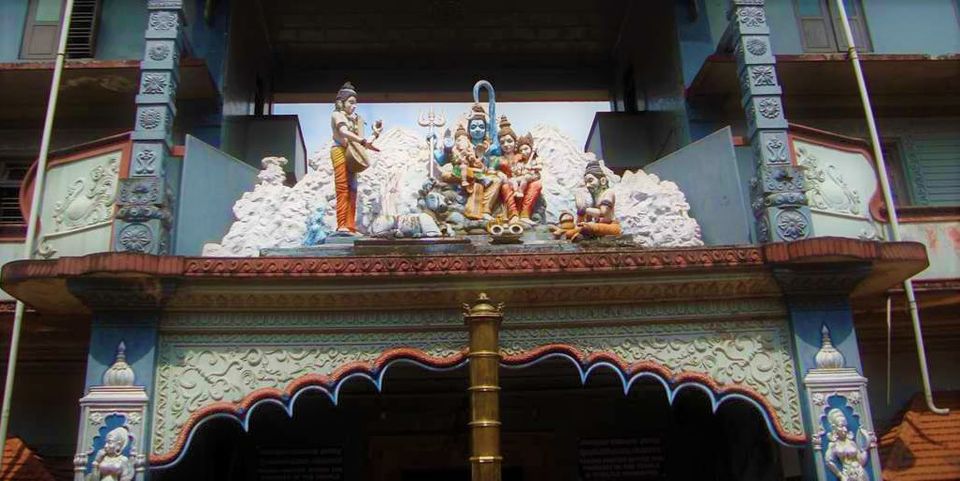
After a peaceful darshan, we had breakfast (around 11AM) at a small eatery opposite to the temple and headed back to Murdeshwar temple. The religious importance of this place dates back to the times of Ramayana where Lord Ganesha deceived Ravana and placed the Atma-Linga on the ground. When Ravana tried to remove the Atma-Linga, parts of it were scattered and fell in the nearby places and it is believed that the cloth covering the Atma-Linga fell at MurdeshwarThe temple has a 20 storied Raja gopura with two life-size concrete elephants guarding the gopura. This temple complex is probably the only one that has provided a lift facility in the gopura through which visitors (devotees) can reach the top of the gopura. From the top, one can witness the enchanting beauty of the Shiva statue and the magnificent waters that surround. Around the Shiva statue is a beautiful stretch of green lawns which has various flowering plants and sculptures such as Sun Chariot, Arjuna receiving Geetopadesha from Lord Krishna, Ravana being deceived by Ganesha in disguise, Bhagiratha and the descend of Ganga, carved around the hill.The temple complex, including the 249-feet-tall Raja Gopura and the Shiva statue, was constructed to its present form by businessman and philanthropist, Late Dr R N. Shetty, who was from Murdeshwar.
After having darshan here, we had our lunch at the temple complex which provides free lunch to the devotees. Post lunch, we relaxed for a bit in the temple complex and then proceeded to climb the hill on which the Shiva statue is erected. The base of the Shiva statue can be reached by taking two flights of covered stairs with good railings. There is another Shiva temple at the base of the statue and also a cave museum called Bhukailasa cave museum. It has an entry fee of INR 10 and has sculptures depicting stories of Lord Shiva including the one of Ravana taking the Atma-Linga. Our afternoon was well spent here.The Murdeswar beach which is next to the temple complex, is an excellent place to spend time. The beach is surrounded by small hills and lush greenery along with abundant coconut trees. After spending our evening time at the beach, we had our dinner at a restaurant opposite to the beach and boarded the KSRTC Airavat AC Volvo bus [Club class] at 8PM to head back to Bengaluru and we reached the next morning around 7AM. [Bus fare is approx INR 1300 per person]
This brings us to the end of a short but an incredible meaningful trip.




Stay tuned for more travel destinations and tips.
Hope you liked this post
Thank you



